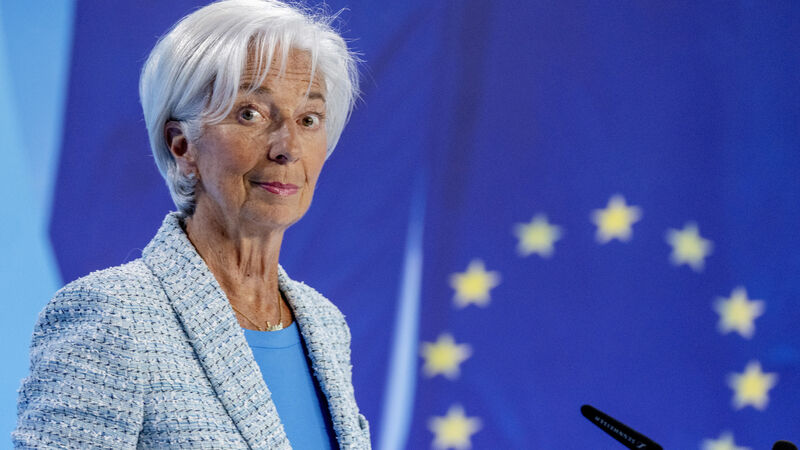David McNamara: Markets expect a number of rate cuts for all three regions between now and year-end

President of the European Central Bank Christine Lagarde. Markets expect two more rate cuts from the central bank this year.
Given the first half of the year is well and truly behind us, and with the summer round of the main central banks' meetings completed, perhaps now is a good time to take stock of the current economic situation.
In the US, despite some loss of momentum at the start of 2024, GDP accelerated in Q2.
Meanwhile, the disinflationary trend, which had stalled in Q1, resumed in Q2, as evidenced by both core-CPI and core-PCE reaching their lowest levels since spring 2021.
However, there have been some signs of softening in the labour market in recent months. Payrolls have risen more slowly, including in July, while the unemployment rate has tracked higher, and currently stands at 4.3%. Overall though, the US economy appears to be in relatively good shape.
In the UK, the economy has gathered some steam this year. GDP rose by 0.7% q/q in Q1, the fastest pace of growth since Q4 2021. Monthly data show GDP stagnated in April, but rose by 0.4% m/m in May.
Meantime, survey data indicate economic activity continued to rise at a solid pace in Q2. However, the labour market has cooled in 2024.
At the same time, both headline and core inflation are in decline, at 2% and 3.5%, respectively in May and June. It should be noted though, that services inflation and wage pressures remain elevated in the UK.
Nevertheless, a majority of Bank of England MPC members were of the view the risk of inflation becoming embedded had receded enough to facilitate a 25bps rate cut. Thus, the UK economy has done better than expected so far this year.
The eurozone economy has also returned to growth in 2024, with GDP rising by 0.3% q/q in Q1 and in Q2. Among the four largest economies, Spain continued to perform the best, followed by Italy and France.
However, the German economy remains weak, with GDP contracting once again in Q2. More broadly, there have been some indications economic conditions have softened in the eurozone during the summer months.
Meanwhile, little further progress on the inflation front has been made since the end of Q1. Headline, core and particularly services inflation have proven to be sticky recently. However, it should be noted the ECB warned inflation would be “bumpy” throughout the remainder of 2024 when it decided to cut rates in June.
Looking ahead, futures pricing indicates markets expect a number of rate cuts for all three regions between now and year-end. Federal Reserve chair Jerome Powell indicated the Fed may start to cut rates as soon as its next meeting in September. The market is pricing around 100bps of policy easing in the US by year-end.
Meanwhile, the ECB and the UK have already cut rates by 25bps this year. Furthermore, the market anticipates two more rate cuts between now and the end of 2024.
Given the ECB and BoE remain in data-dependent mode, the path of inflation, particularly services inflation, will be key in determining the level of policy easing ahead.
Further rate cuts should provide a supportive backdrop for all three regions, even if there are areas of concern currently. Thus, while a number of risks remain, a much talked about “soft-landing” for all three economies remains achievable.
- David McNamara is chief economist with AIB















